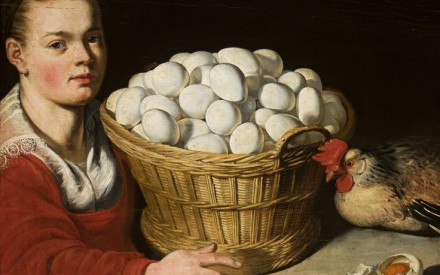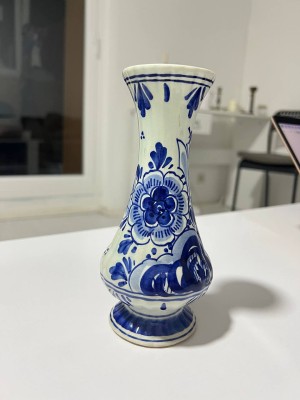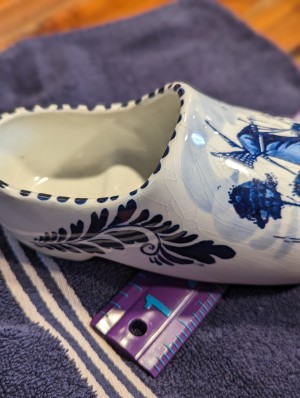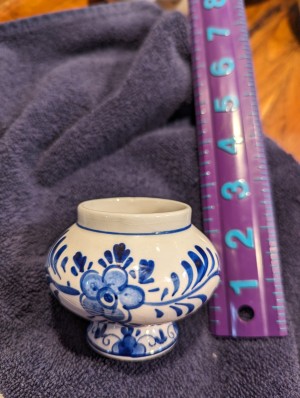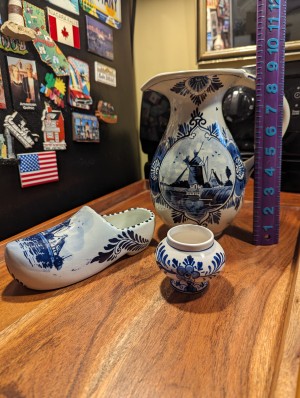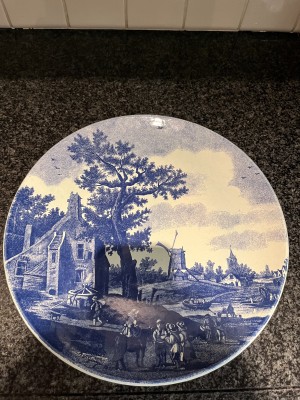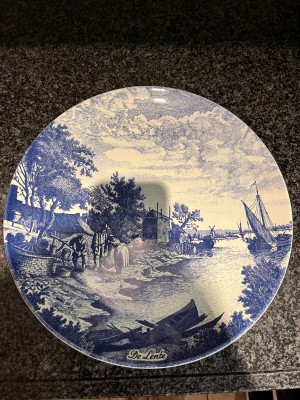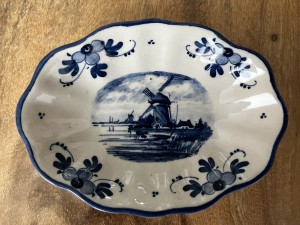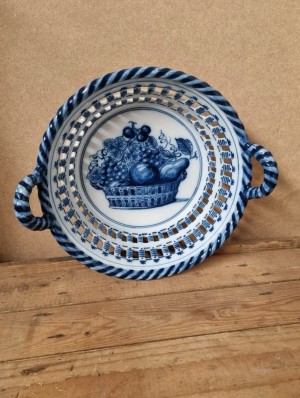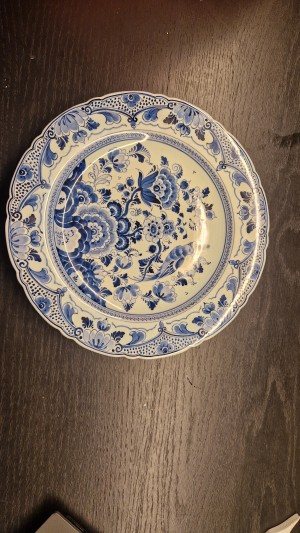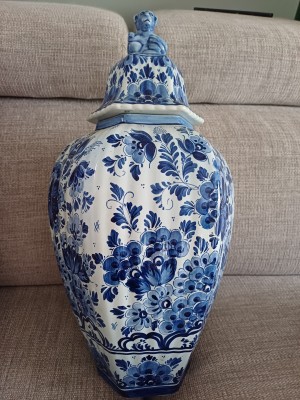Publications
Last comments
Verdict:
- Not Delftware
Analysis:
- More recent production technique
Looking at the unglazed ceramic, visible on the bottom rim, this is slipcast earthenware - a technique devised after the period of antique Delftware. Although we don't see any known marks, when 'Delft(s)' or 'Made in Holland' was written on the bottom, this is usually a sign that the makers wanted to let potential buyers know the affinity to Delftware and/or the Netherlands.
I think it will be very difficult to tell you an exact artist as these types of pieces have been made in great numbers, industrial production. In this sense, it cannot be said that this piece is 'fake' as it doesn't try to be anything it's not, but it is definitely not antique/original Delftware. Hopefully this has been of help!
Verdict:
- Not Delftware
Analysis:
- Not made in Delft
- More recent production technique
- Unmarked
These types of items, expecially pieces that reference a 'traditional notion' of Dutch culture such as clogs/wooden shoes, windmills, kissing farmers in folk dress, have been made in great volumes for export markets, especially the US. Post-war there was a surge in demand for items like these. The writing on the bottom is stamped, but doesn't tell us much about where it was produced - only that they wanted to express the likeness to antique Delftware.
Verdict:
- Not Delftware
Analysis:
- Not made in Delft
- More recent production technique
- Mark of a non-Delft pottery/factory
Merk:
- Elesva
This piece was made by Elesva, a factory in Leiden, founded in 1919. I don't have other direct references on me to suggest a closer date, but perhaps other experts know more about the date and use!
Verdict:
- Not Delftware
Analysis:
- Not made in Delft
- More recent production technique
- Unmarked
The number 75 does not refer to a date - it is most likely a production reference and could mean several things. My estimate is that this is post-war 20th century ceramic in Delft style, produced for the export market. There was a great increase in demand, especially from the US, for Delft style ceramics, which cause a surge in export production. Often, these pieces were not made in Delft, but other cities like Gouda, which also have a rich history in ceramics - even if it doesn't qualify as 'Delftware'.
Verdict:
- Not Delftware
Analysis:
- Not made in Delft
- More recent production technique
- Mark of a non-Delft pottery/factory
Hallo! Hierbij hetzelfde verhaal als het andere stuk. Voor andere gebruikers die hierop stuiten: https://delftsaardewerk.nl/merk/chemkefa.
Verdict:
- Not Delftware
Analysis:
- Not made in Delft
- More recent production technique
- Mark of a non-Delft pottery/factory
Merk:
- Chemkefa
De blindstempels zijn vaak productiegegevens en daar is vaak weinig over te zeggen, tenzij iemand anders bijv. de nummers herkent. De producent van dit stuk, Chemkefa, is opgericht in 1969 in Maastricht, dus dit stuk kan sowieso niet antiek zijn.
Verdict:
- Not Delftware
Analysis:
- Not made in Delft
- More recent production technique
- Mark of a non-Delft pottery/factory
Ik denk dat dit item type 'Mesla' werd gemaakt door plateelbakkerij Zenith, Gouda. Tussen 1935 en 1984 werd daar aardewerk in Delftse stijl geproduceerd. Hoe oud het precies is durf ik niet te zeggen, want het valt enigszins buiten de scope van deze website! Wellicht weten de andere experts iets meer te zeggen...
Verdict:
- Not Delftware
Analysis:
- Not made in Delft
- Mark of a non-Delft pottery/factory
Merk:
- A shield
Verdict:
- Not Delftware
Analysis:
- Not made in Delft
- More recent production technique
- Mark of a non-Delft pottery/factory
Merk:
- VL small s
Het merk is van Keramiekfabriek Velsen (Velsen, Sassenheim), 1920-2002. Dit specifieke merk (VLs) werd na 1942 gehanteerd. Voor meer informatie over de maker, het specifieke jaartal etc. hoop ik dat andere experts hier informatie over hebben!
Verdict:
- Not Delftware
Analysis:
- Not made in Delft
- More recent production technique
- Mark of a non-Delft pottery/factory
Het merk onderop deze dekselvaas is van PKG Keramos. We hebben het merk af en toe voorbij zien komen op de website, maar we weten niet zo veel over deze fabriek. Het gaat hier wel om voorwerpen die niet in Delft en ná 1840 gemaakt zijn - beide zijn voorwaarden voor 'echt Delfts aardewerk'. Wat de andere tekens betekenen weet ik niet, misschien een van de andere experts op de website.

